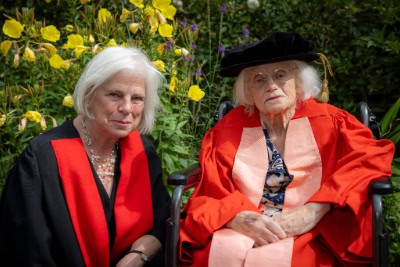
The physicist Rosemary Fowler has had to wait three quarters of a century to be honoured for her role in discovering a subatomic particle.
Fowler was doing a PhD at the University of Bristol in 1948 under the supervision of physicist Cecil Powell when she stumbled upon the particle.
The then 22-year-old physicist spotted unusual particle tracks in photographic emulsions that had been exposed to cosmic rays at high altitude in Switzerland.
She discovered a particle that decayed into three pions and labelled the track ‘k’, with the particle now known as the K-meson or “kaon”.
“I knew at once that it was new and would be very important,” Fowler noted. “We were seeing things that hadn’t been seen before – that’s what research in particle physics was. It was very exciting.”
The results were published in two papers in Nature with Fowler (née Brown) as first author. She then decided to leave university and married fellow Bristol physicist Peter Fowler – the grandson of Ernest Rutherford – in 1949. They had three children, all of whom went on to study science. Peter died in 1996.
This week Fowler, who is 98, was finally honoured for her work. She received an honorary doctorate from Bristol University in a private graduation ceremony held near her Cambridge home.
Fowler said she felt “very honoured” by the doctorate, but added humbly that she hadn’t “done anything since to deserve special respect”.



